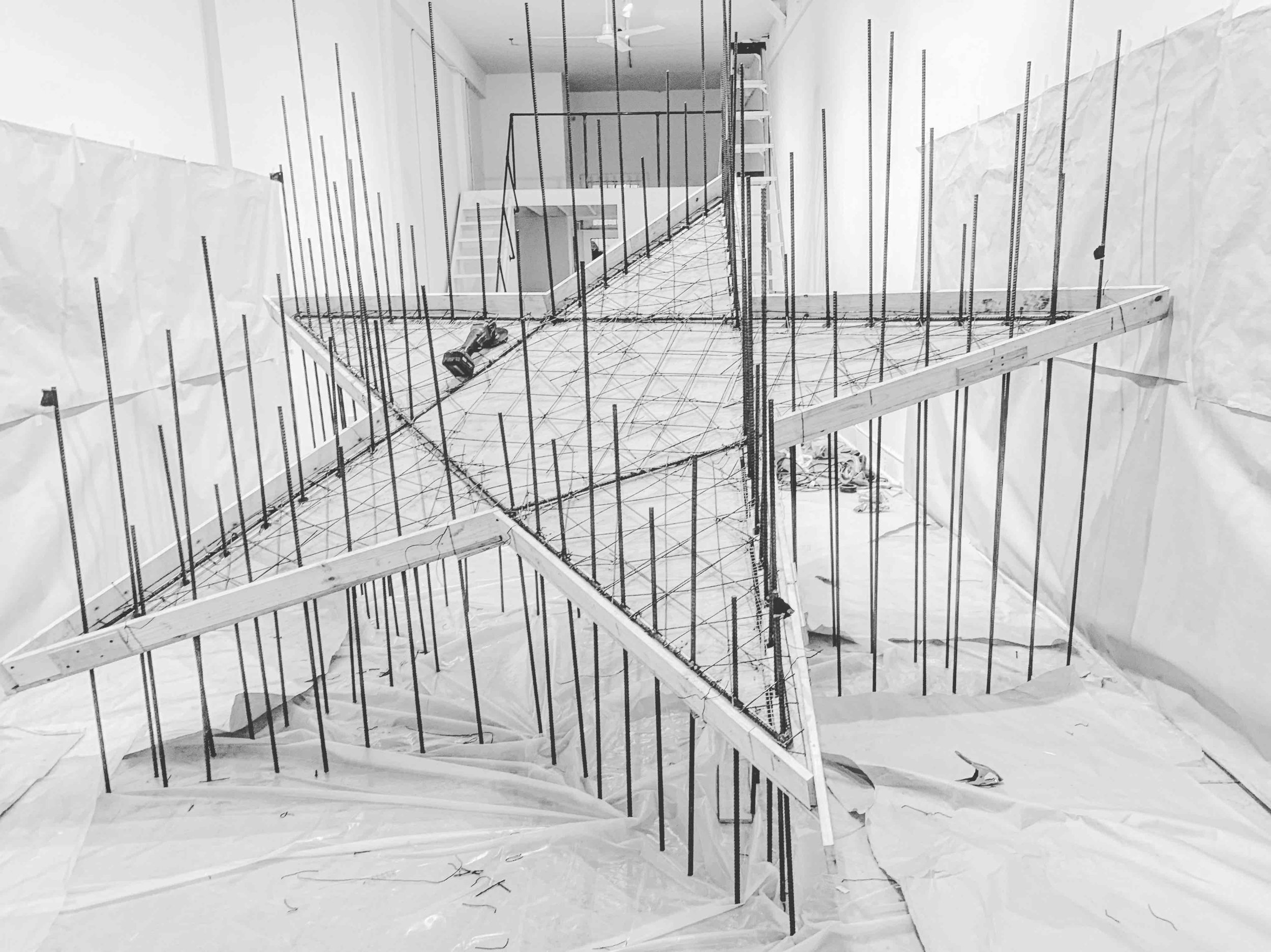BORIS CHOUVELLON
Cruising On Empty
Boris Chouvellon (born in 1980) has a degree from the Villa Arson Visual Arts School of Nice and a Masters Degree from the Ecole Supérieure des Beaux-Arts de Marseille. In 2011, Chouvellon had a solo exhibition accompanied by a catalogue at the Museum of Contemporary Art (MAC) in Marseille. From 2012 to 2014, he was the resident artist at the the Cité Internationale des Arts in Paris. In 2014, he was a finalist for the Révélations Emerige Grant in Paris. In 2015, he was awarded the Prix Des Amis of La Maison Rouge, fondation Antoine de Galbert, where he created a monumental site-specific work. In 2017, Fondations, a monograph published and edited by André Frère, gave an overview of Chouvellon’s work from 2003 to 2016. He presented the monumental work La part manquante for the 2017 edition of Le Voyage à Nantes. In 2018, Chouvellon was the recipient of the Residence Saint Ange in France. His work is in public and private collections in France and internationally. He has exhibited in France, Switzerland, Germany, Belgium, England, Italy, Vietnam, the Netherlands, and Canada. This is the first time that Chouvellon will be exhibiting in Los Angeles.
Chouvellon is a visual artist who is well known in France and internationally for his large-scale sculptural installations. He works with a variety of mediums to create sculptures, video installations, and photographs. Cruising On Empty, is an ongoing work in progress that is inspired by Chouvellon’s residency in Los Angeles: its roads, its coastlines, its typography, and the juxtaposition between the industrial landscape and the entertainment industry.
Chouvellon explores the urban space and its periphery. His work questions contemporary society by conducting constructive poetic experiments in the traces of its ruins, to the point where it borders on nonsense. His field of exploration is situated on the boundary of urban space and its outskirts (territorial, social and human). He navigates (by foot, car, or train) the border spaces (peripheral roads, motorways, coasts, and rivers). He tries to reproduce a representation of the modern ruin, where agricultural, industrial, commercial zones, as well as construction zones in states of neglect and oblivion are transplanted. All these states of the contemporary world are documented, photographed, recorded, and filmed. His working method consists of selecting objects, forms, and impressions in the real world, and then transforming them in the studio space. He aims to operate displacements and disconnections, which at the same time reveal their state, by bringing the world’s fragments into an imaginary and dreamlike dimension.

